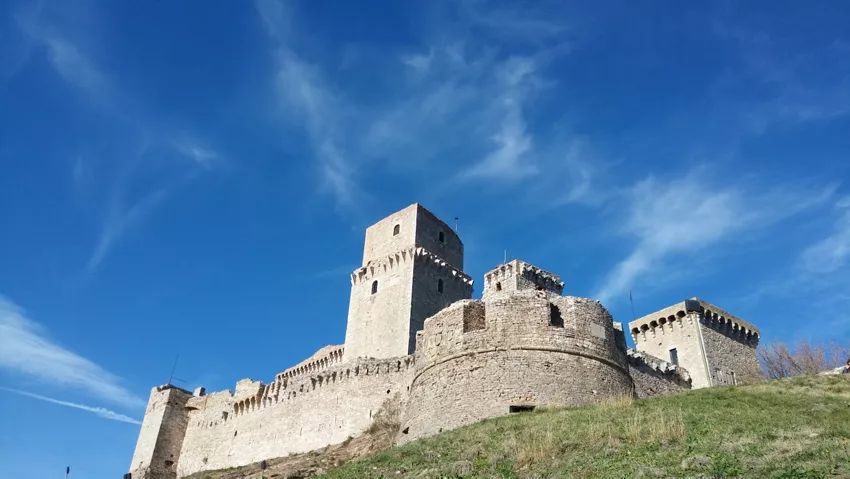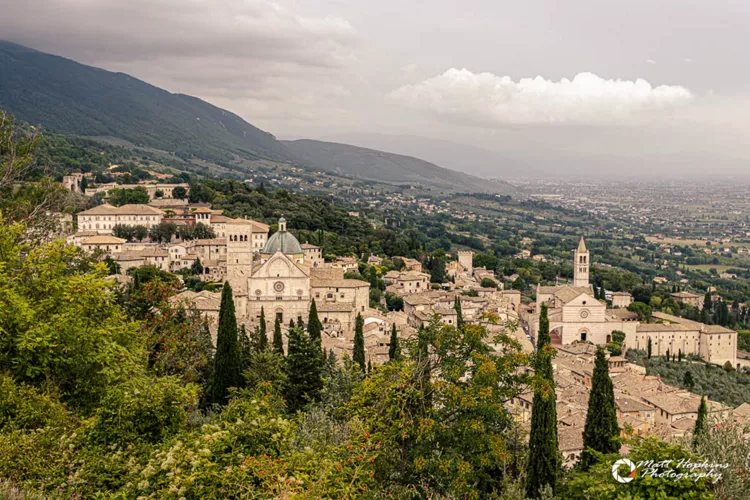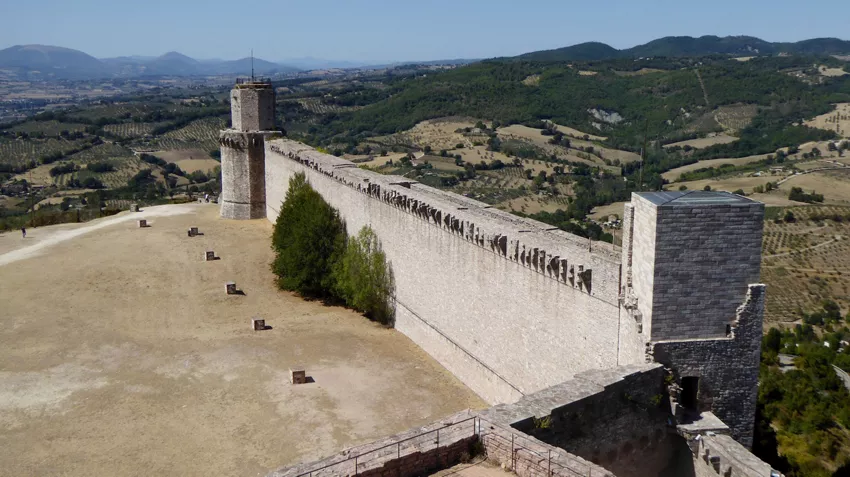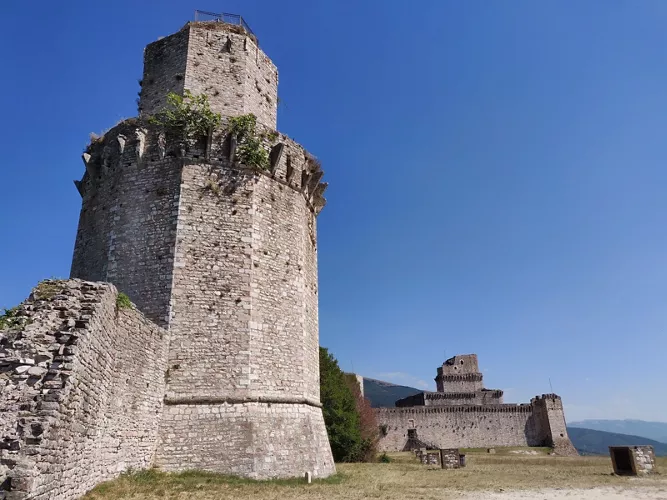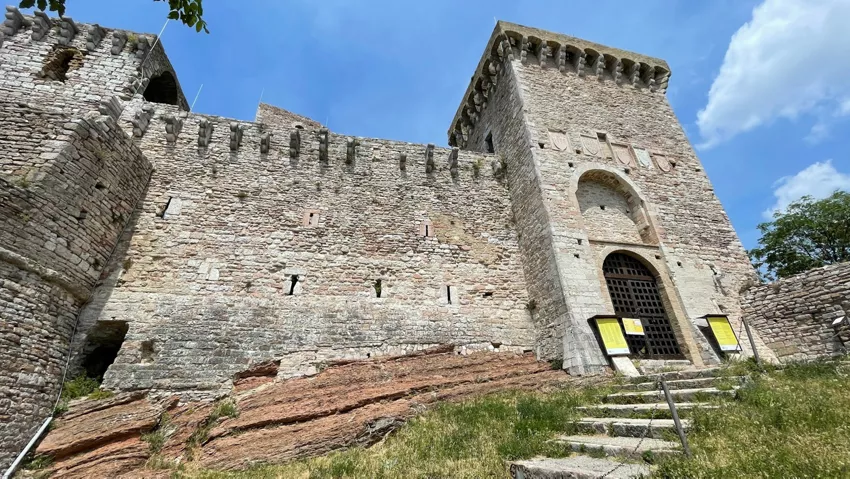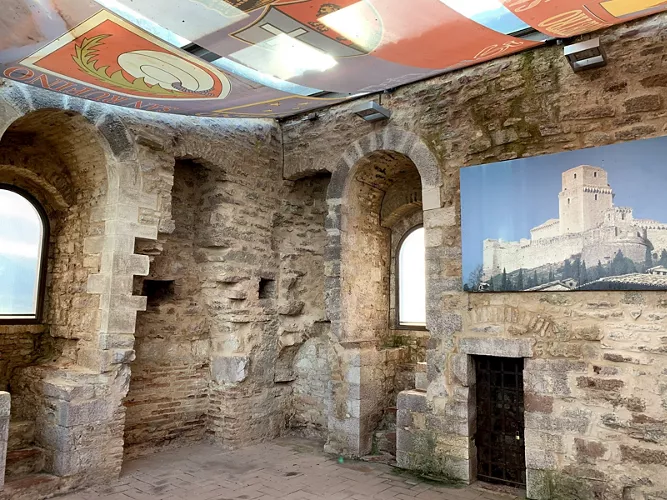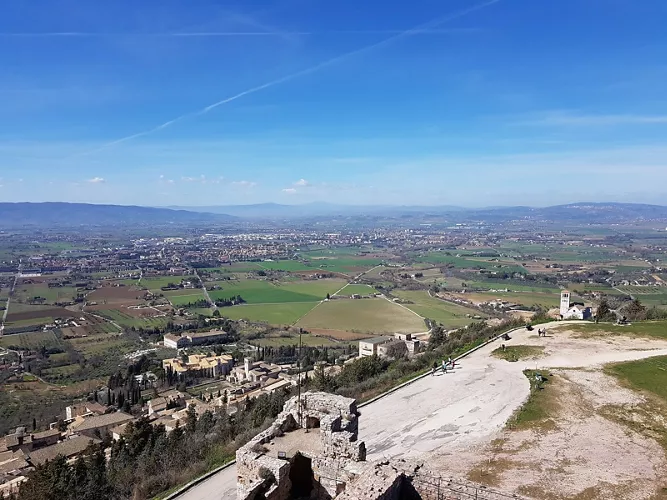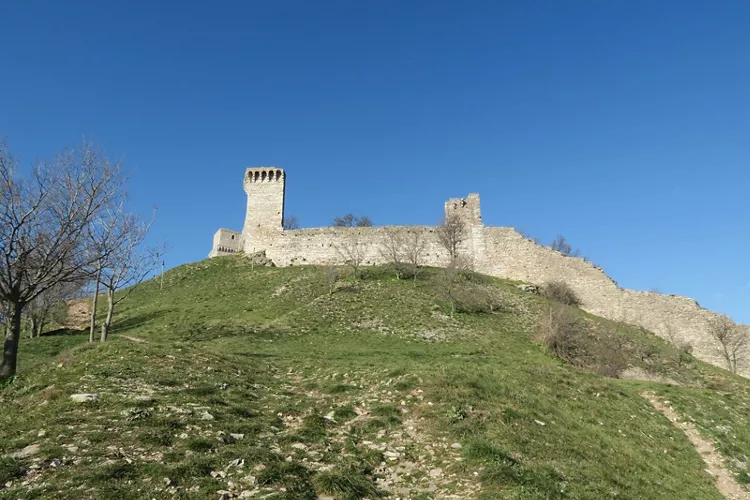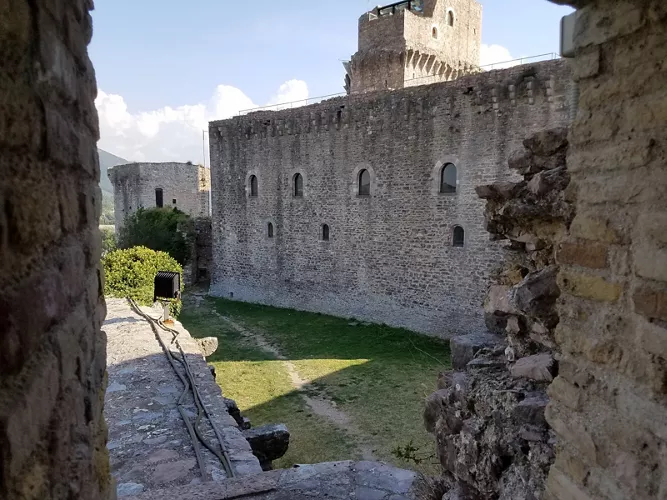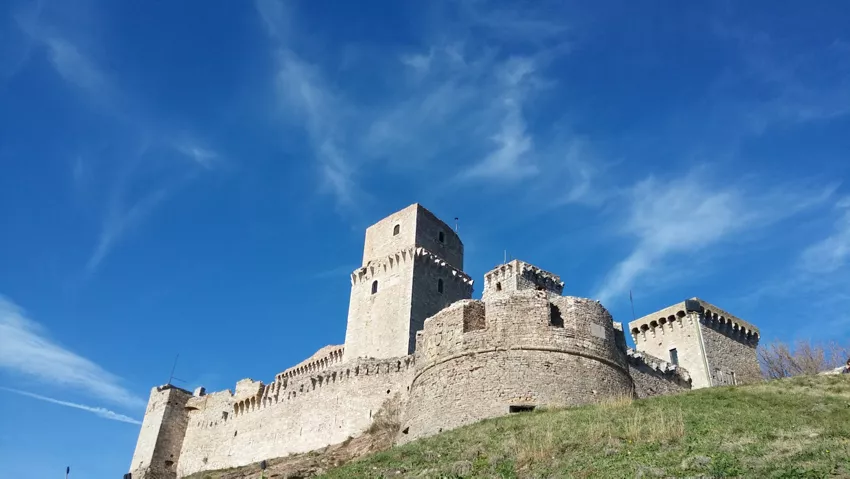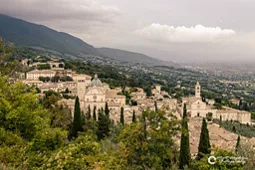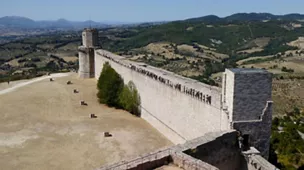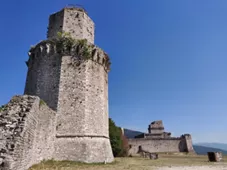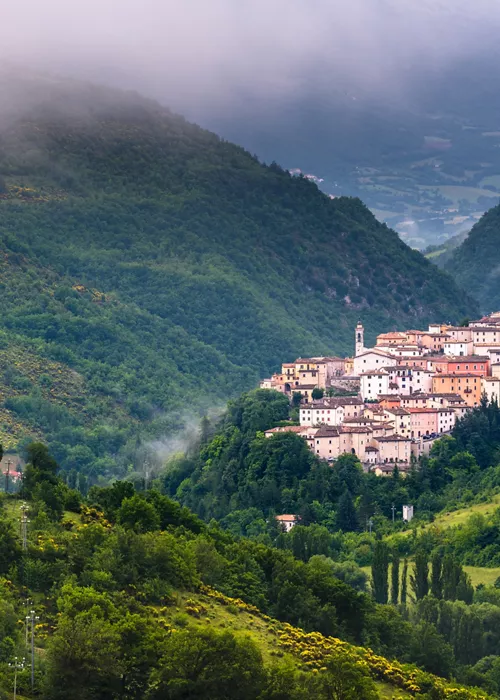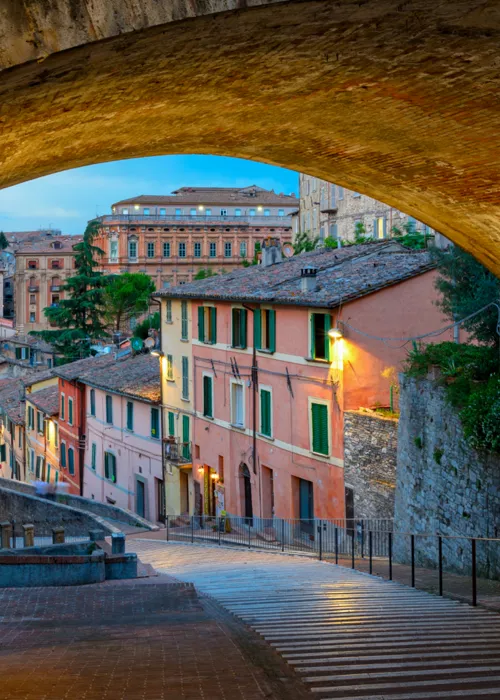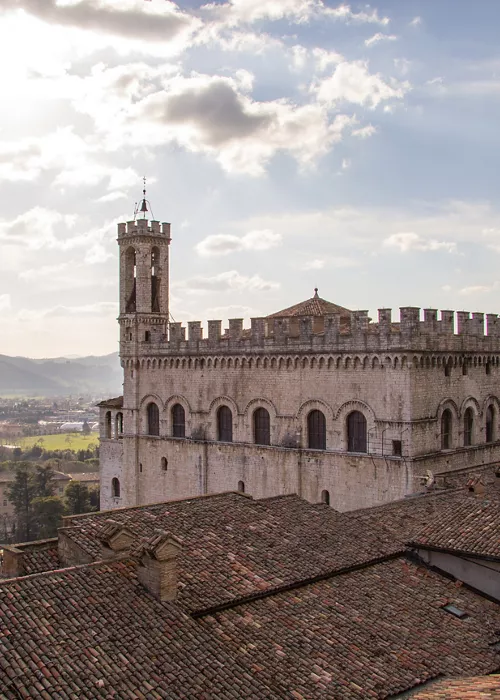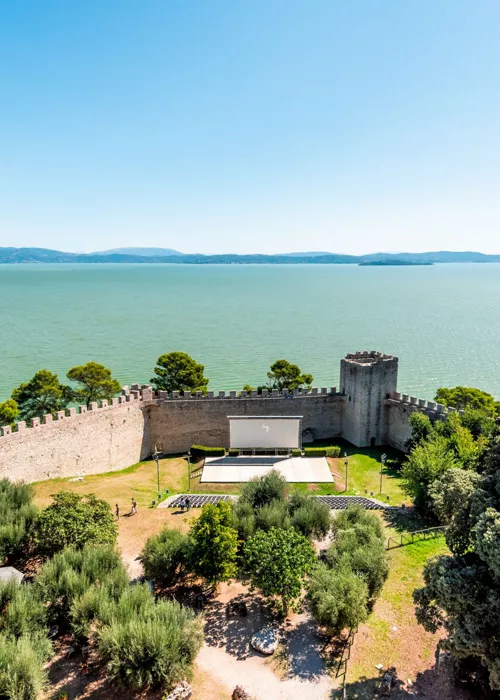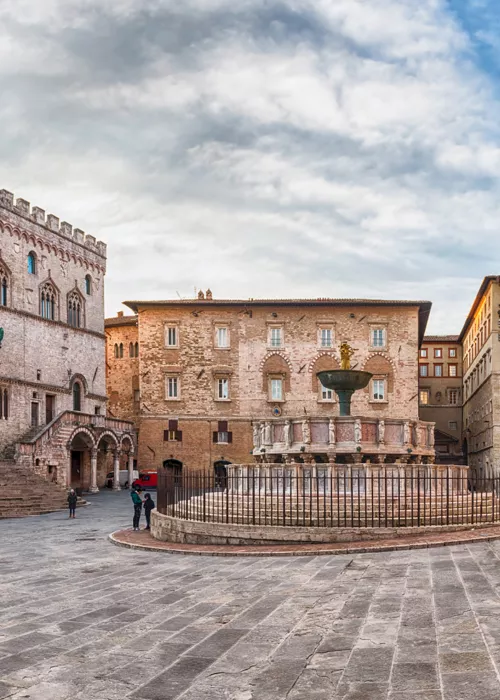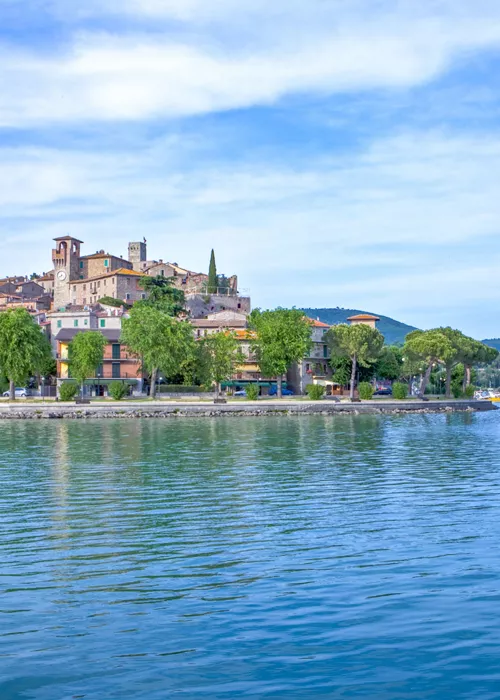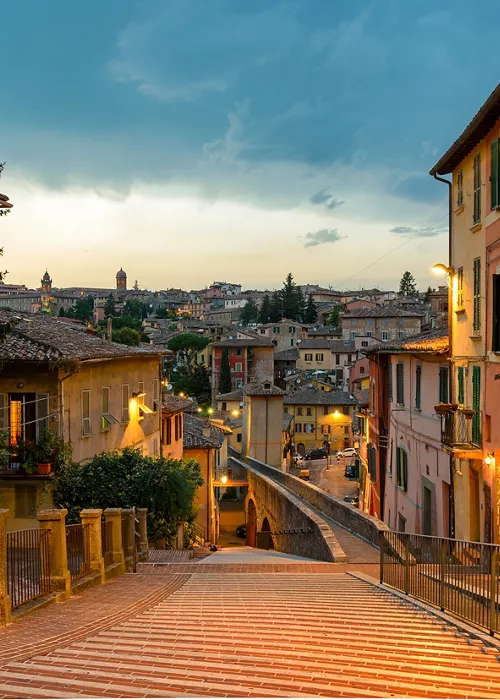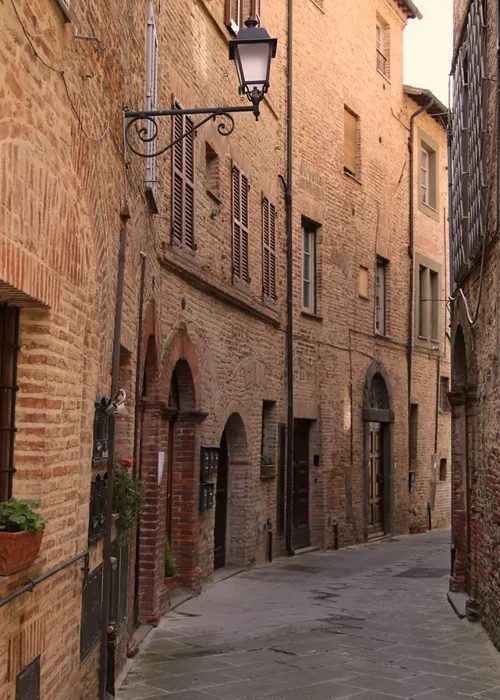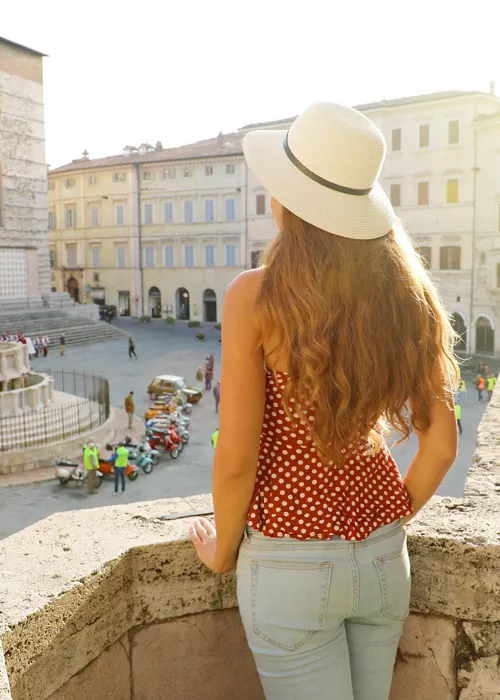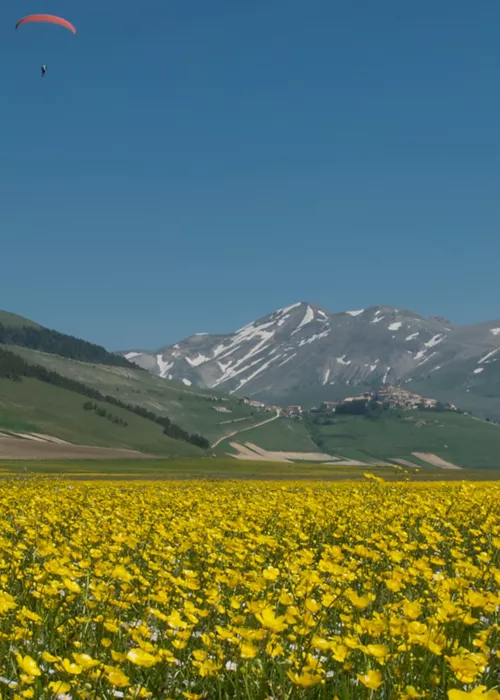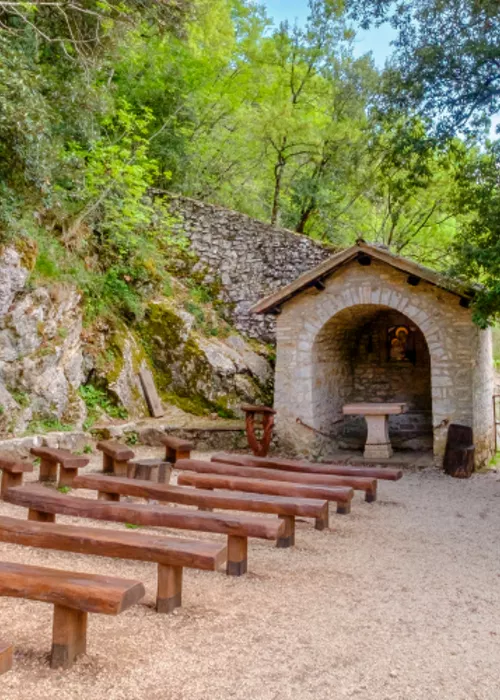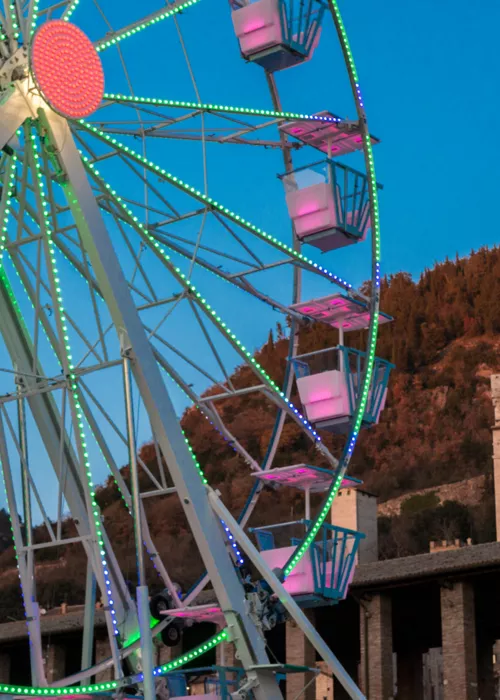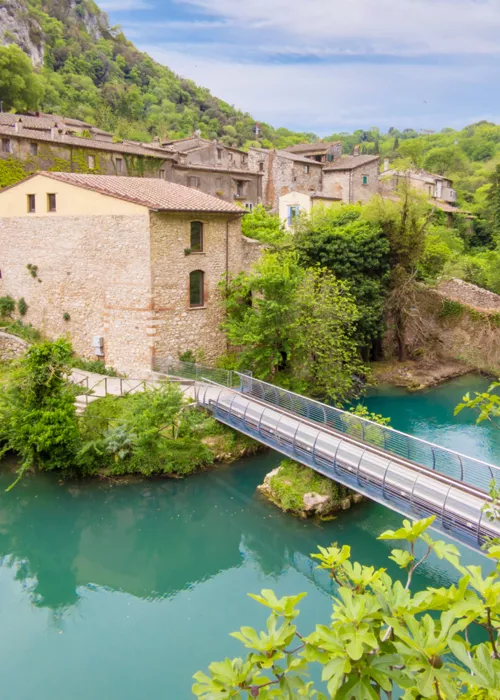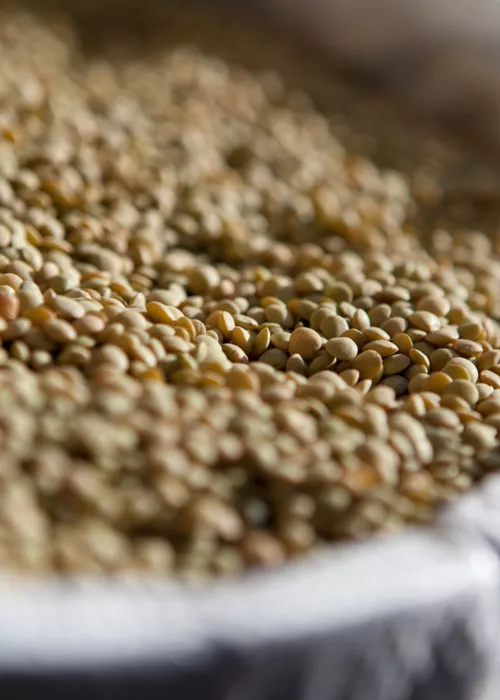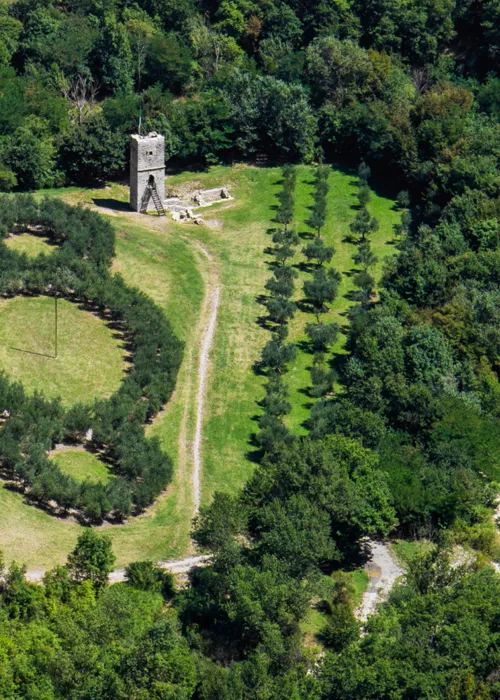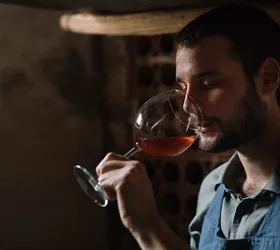At the highest point of the city, it is possible to reach the Rocca Maggiore of Assisi, either by walking along Via Porta Perlici, near the cathedral of San Rufino, or by walking along the outer ring road to the top of the Asio hill.
The first historical records of this fortified structure date back to the years 1173-1174, when Christian, Archbishop of Mainz, occupied Assisi on behalf of Frederick Barbarossa. It was destroyed in 1198 by a citizen's revolt, which, according to tradition, forced the Duke of Spoleto, Conrad of Ursilengen, and the young Frederick II, only four years old, to flee. The fortress was abandoned until 1362, when Cardinal Egidio Albornoz decided to rebuild it on the basis of the ancient Germanic fortification.
Today, the Rocca Maggiore towers imposingly over the historic centre below, the narrow gorge crossed by the Tescio river and a large part of the Valle Umbra, which stretches from Perugia to Spoleto: visiting it therefore means having the opportunity to admire a significant example of 14th-century military architecture that is still well preserved, while enjoying one of the most beautiful views of Umbria.
The fortress is made up of a main tower and angled fortress, both square in shape, with a system of walls and towers through which various maintenance and restoration works have been carried out over the centuries. During the rule of Biordo Michelotti (1394-1398), his coat of arms appeared on the fortress, while in 1458, a polygonal tower was erected to the north-west by order of Jacopo Piccinino. The following year, Pope Pius II decided to build a corridor connecting the fortress to a dodecagonal tower. In 1484, the entrance door near the fortress was built, on which three coats of arms are engraved (that of Sixtus IV in the centre). In the late 15th century, the fortress became the scene of bitter clashes between the Fiumi and Nepis families. Later, in 1501, Cesare Borgia settled there, followed by his sister Lucrezia. The last work on the fortress of Assisi was carried out in 1535, on the orders of Pope Paul III, with the construction of a circular bastion. Given its main defensive function, the Rocca Maggiore was used as the residence of castellans, charged with guarding the territory, then as a prison and warehouse. Today, restored, it can be visited. The entrance is located near the 16th-century bastion. Inside, a courtyard paved with 14th-century bricks, the fortress with service rooms and the fortress, which served as the castellan's residence, with five rooms connected by a spiral staircase.
The fortress Rocca Maggiore is currently closed for restoration.



